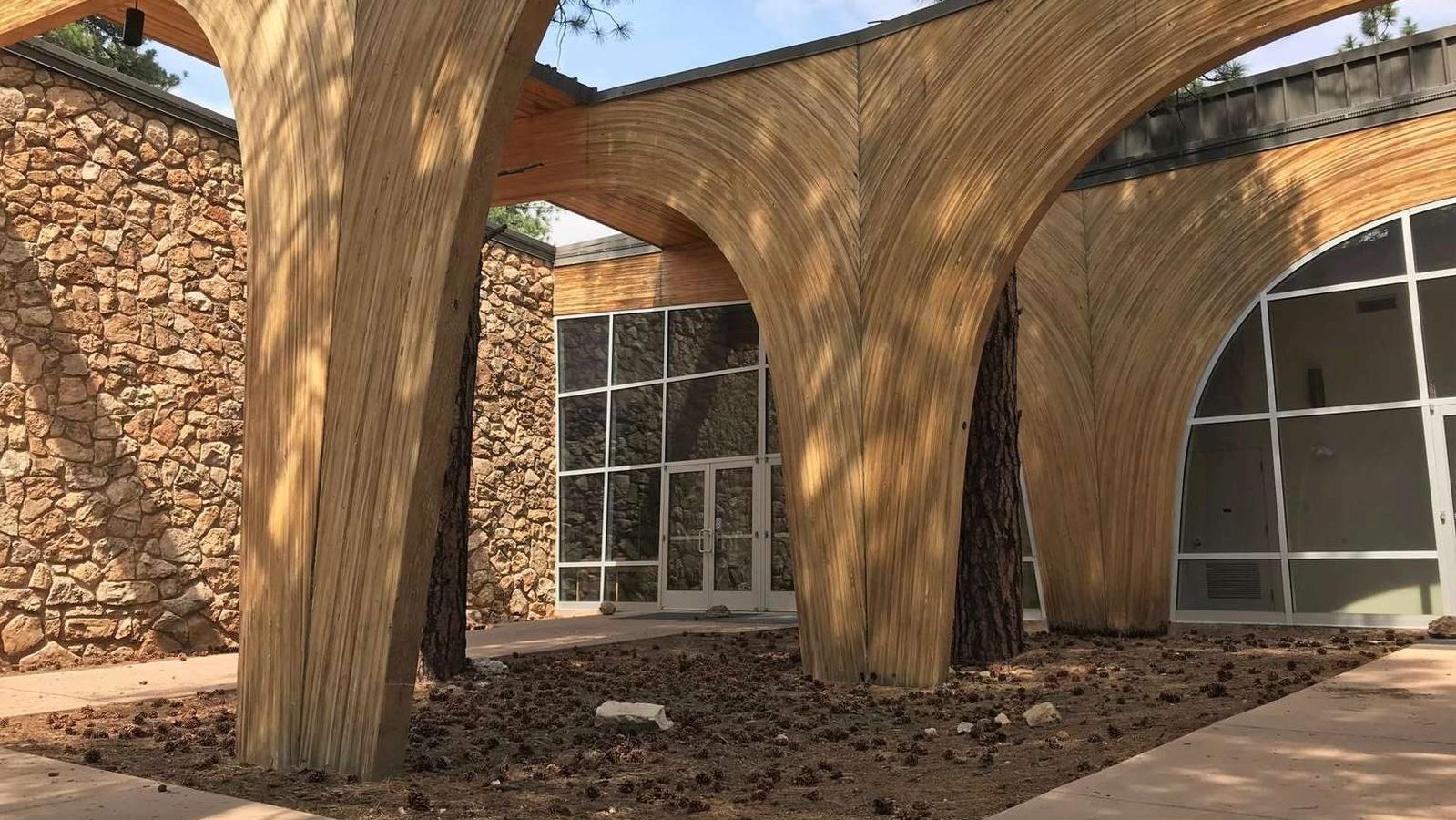Last updated: August 20, 2025
Place
Shrine of the Ages

NPS
Amphitheater, Bicycle - Rack, Parking - Auto, Picnic Table, Restroom, Restroom - Accessible, Water - Drinking/Potable, Wheelchair Accessible
Shrine of the Ages is a multi-purpose building used by the National Park Service, Grand Canyon Conservancy, and community groups. It can also be rented for private functions, including family gatherings and wedding ceremonies, with an application for a Special Use Permit.
Parking is on the west end of Parking Lot A. Shrine of the Ages is within walking distance of Market Plaza, Mather Campground, Trailer Village RV Campground, and Yavapai Lodge. The Village (Blue) Route shuttle has designated stops here. Eastbound (to the Visitor Center) and westbound (to the Village Historic District).
Planning to host or attend an event at the Shrine? Additional information is located on the Grand Canyon Shrine of Ages webpage.
Special events, such as concerts, symposia or cultural presentations take place in the auditorium. Activities include: park ranger programs, guest speakers, visiting artists, musicians, or even students from Grand Canyon School who present their own programs to the community and park visitors.
The Grand Canyon Music Festival has taken place here in the Shrine, every year for 42 years, during August and September.
When you are visiting the park, ask at the Visitor Center to see if programs are being offered during your stay, or view the park's Digital Calendar for current schedules.
Religious Services
Religious services are offered in Shrine if the Ages Auditorium, and the surrounding community. Current schedules are posted at Mather Campground (near the check-in station), the information kiosk near the U.S Post Office in Market Plaza, the Visitor Center, and Verkamp's Visitor Center in the Village Historic District.
History
Although the idea for an interfaith chapel at Grand Canyon was proposed as early as 1917, it was not until 1952 that the Shrine of the Ages Chapel Corporation was formed, plans drawn up, and fundraising started. Representatives from Catholic, Jewish, and Protestant services comprised the Corporation. The National Park Service approved it because it offered the opportunity for all religious faiths to have a place of worship. The idea was to build a permanent building near a site on the canyon rim already used for services, including a very popular Easter Sunrise service.
Harold E. Wagoner, a member of the board of directors of the Church Architectural Guild of America, was selected as architect. Working within National Park Service guidelines to respect the natural environment and American Indian culture, he designed a structure that reflected the architectural style of a kiva, a place of worship used by native people in the Southwest. This design worked well since the National Park Service also required that no towers or specific religious symbols be used.
Because the initial building site was on the rim of the canyon just west of today's Hermits Rest Route (red) shuttle stop, plans called for the main auditorium to have a sweeping canyon view from a multi-story, curved window placed behind the altar. A special hydraulic lift would raise and lower at least three different altar configurations for Jewish, Catholic, and Protestant services. An organ placed on a small balcony, with wind chests and pipes located at different sections of the main chapel, would provide stereophonic sound effects.
Even as fundraising efforts reached around the world, questions about whether the rim was an appropriate location for the structure resulted in delays. Some even argued that the building only remotely resembled a kiva, instead looking more like a huge spacecraft perched on the canyon rim. Donations were never quite enough to realize Wagoner's plans, and federal funding became involved. The building was ultimately redesigned and relocated away from the edge of the canyon. An appropriate site was chosen next to the existing Grand Canyon Pioneer Cemetery, and Shrine of the Ages was completed by 1970.
The National Park Service took over ownership of the building in 1975, along with all maintenance, operational, and administrative duties.
